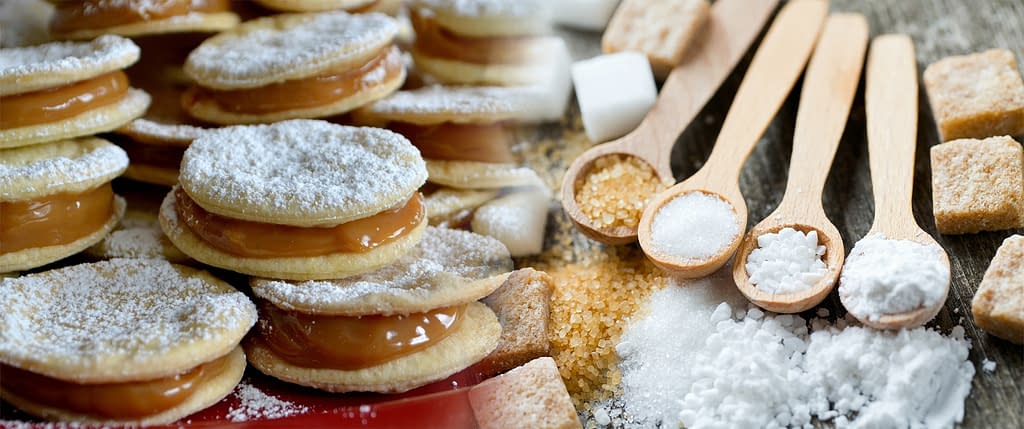If you are a food lover wishing to explore bakeries, tasting doughnuts, marshmallows, and chocolate-covered cereals, powdered sugar is always there for you. Some may be fond of spicy dishes but having some sweet cake after finishing them will be an offer that you cannot refuse! Even when you see, taste, and feel something covered with powdered sugar every day, most of us do not know how to make and use them. In fact, what we aim to write this is to make you understand the science behind powdered sugar and remove many questions related to it in your mind.
Powdered Sugar Defined
Powdered sugar is just like granulated sugar in its chemical perspective, with the same molecule, taste, and other physical properties. The chemical component of them is sucrose. But the difference comes with their size. Their crystals are reduced to small particle sizes. To be precise, the individual sugar crystals will have an average size of 50 micros for powdered sugar. The more you see the individual crystals in granulated sugar, and less you see sugar crystals are good with powdered sugar.
What is it Used For?
Generally, granular sugar and powdered sugar have the same purpose in cooking. But for baked food products, powdered sugar plays a whole different role. It will define the texture of what you are baking. For example, if you add granular sugar with butter to cream cookies, cakes, or pantries, it will produce droughts. This makes the product more light and airy. At the same time, powdered sugar will prevent creating such air pockets. It is because they are small in size and thus restrict air travel. As a result, the texture of the baked food product will be denser and thinner. So, they are used to bake melt-in-the-mouth type products and crispy types like chocolate chips at the same time. The difference only comes with the type and amount of powdered sugar used.
How to Make it?
The basic step to make powdered sugar is to mix water and sugar. The more you mill the sugar crystals, the more they will dissolve in water. At room temperatures, you can dissolve powdered sugar with almost twice the weight of the initial water. The process will continue till they reach the saturation level. It is the point where the water can no longer dissolve sugar. It happens because there will be no water molecules available around the individual sugar molecules to dissolve them.

Properties Influence the Nature of Sugar Icing
- Moisture- The moisture in the atmosphere will be a factor for dissolving the sugar crystals in water. The more there is moisture, the more the sugar icing can absorb water from its surroundings. Then it becomes wet.
- Water-Sugar ratio- As we have seen, the water-sugar ratio defines the nature of powdered sugar icing. The effect that will make on the food material you wish to use is directly dep[ended on it.
- Temperature- In most times, the process of making powdered sugar icing is done at room temperatures. But when the temperature increases, water molecules will move rigorously and gets the ability to dissolve more sugar.
- Size of sugar crystals- We have already said that the sugar crystals must be of the smallest size possible. Not because it produces air droughts, it dissolves more in water as small crystals.
- Color Change- The sugar crystals reflect light differently compared with water. Light scatters more randomly. So, the amount of water defines the color of the sugar icing.
Let the Icing Set
After you have made the sugar icing, it is time for you to let it set. Water evaporates absorbing heat from where it resides and escapes to its surroundings changing its phase from the liquid into the air. You may notice that you feel cold when wearing a wet shirt. It is because the water in the shirt absorbs heat from our body and it evaporates. After the evaporation process, the sugar icing becomes thicker or stiffer, since the distance between each sugar crystal has reduced. It makes you crunch them with teeth.
Wrapping Up
No matter how much you are into sweet dishes, it is always good to try it out, cooking or tasting. Whenever you do so, understanding the origin of each variety of tastes is good to make you master taste. In fact, it is what we have tried to do here, telling you all about powdered sugar icing. Now it is your turn to try it out at the food table or kitchen.